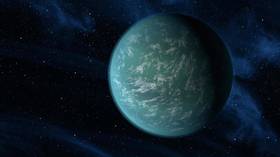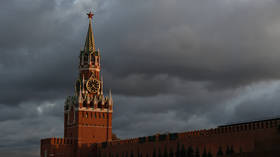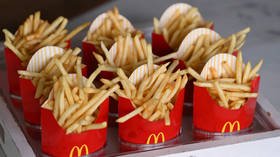Surf’s up? Planets with oceans likely far more common than we thought, says NASA

Water is central to the ongoing search for life and potentially habitable worlds within the Milky Way. According to NASA planetary scientist Lynnae Quick, there could well be far more such ‘waterworlds’ than we previously thought.
Typically, when examining potential candidates for study, and potential colonization, astrophysicists and astrobiologists will seek out worlds located in the ‘Goldilocks’ zones of their stars – just right for liquid water to exist somewhere on the planet.
We are currently aware of around 4,000 such exoplanet cousins to the watery moons in our solar system, Saturn’s Enceladus and Jupiter’s Europa, elsewhere in the galaxy. In particular, Quick wanted to examine whether more distant worlds exhibited similar behaviors to these moons; those being, erm… large ‘belches’ of water from the surface.
“Plumes of water erupt from Europa and Enceladus, so we can tell that these bodies have subsurface oceans beneath their ice shells, and they have energy that drives the plumes, which are two requirements for life as we know it,” says Quick, a specialist in volcanism and ocean worlds, and icy planetary upchucks apparently.
“So if we’re thinking about these places as being possibly habitable, maybe bigger versions of them in other planetary systems are habitable too.”
Also on rt.com There could be up to 6 billion Earth-like planets in the Milky Way according to explosive new researchQuick had a hunch that there may be more worlds out there beyond our solar system with equally bad manners but enough liquid water to sustain some form of life.
With this in mind, she and her team based in NASA’s Goddard Space Flight Center in Maryland pored over the data and conducted a deep-dive analysis of several dozen exoplanets, many of whom are located in the TRAPPIST-1 system where Quick previously discovered several exoplanet candidates.
To their and Kevin Costner’s delight, they found that more than 25 percent of the candidates in the dataset could well be waterworlds, throwing open the floodgates to far more potentially habitable worlds, once we can verify them using future technology that enables us to take a closer, more in-depth look.
For now, we will have to make do with NASA’s upcoming James Webb Telescope to help us search for potential second Earths or, at a push, second Europas and Enceladuses. Future missions will likely focus on the worlds’ heat emissions, seeking out those that match up with those of our nearest waterworlds.
The method and the amount of heat emission could make or break the case for the habitability of an exoplanet, and will likely play a key role in the methodology for future colonization studies.
Think your friends would be interested? Share this story!















